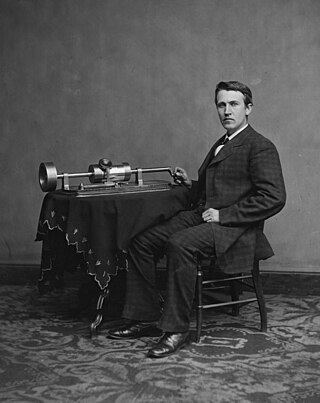
A phonograph, in its later forms also called a gramophone or since the 1940s called a record player, or more recently a turntable, is a device for the mechanical and analogue recording and reproduction of sound. The sound vibration waveforms are recorded as corresponding physical deviations of a spiral groove engraved, etched, incised, or impressed into the surface of a rotating cylinder or disc, called a "record". To recreate the sound, the surface is similarly rotated while a playback stylus traces the groove and is therefore vibrated by it, very faintly reproducing the recorded sound. In early acoustic phonographs, the stylus vibrated a diaphragm which produced sound waves which were coupled to the open air through a flaring horn, or directly to the listener's ears through stethoscope-type earphones.
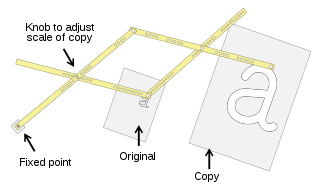
A pantograph is a mechanical linkage connected in a manner based on parallelograms so that the movement of one pen, in tracing an image, produces identical movements in a second pen. If a line drawing is traced by the first point, an identical, enlarged, or miniaturized copy will be drawn by a pen fixed to the other. Using the same principle, different kinds of pantographs are used for other forms of duplication in areas such as sculpting, minting, engraving, and milling.

Phonograph cylinders are the earliest commercial medium for recording and reproducing sound. Commonly known simply as "records" in their era of greatest popularity, these hollow cylindrical objects have an audio recording engraved on the outside surface, which can be reproduced when they are played on a mechanical cylinder phonograph. In the 1910s, the competing disc record system triumphed in the marketplace to become the dominant commercial audio medium.

The Victor Talking Machine Company was an American recording company and phonograph manufacturer that operated independently from 1901 until 1929, when it was acquired by the Radio Corporation of America and subsequently operated as a subsidiary called RCA Victor.

Berliner Gramophone – its discs identified with an etched-in "E. Berliner's Gramophone" as the logo – was the first disc record label in the world. Its records were played on Emile Berliner's invention, the Gramophone, which competed with the wax cylinder–playing phonographs that were more common in the 1890s and could record.

The American Record Company was an American record label that was in business from 1904 to 1906.

Pathé Records was an international record company and label and producer of phonographs, based in France, and active from the 1890s through the 1930s.
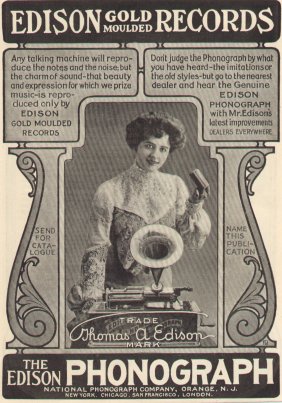
Edison Records was one of the early record labels that pioneered sound recording and reproduction, and was an important player in the early recording industry.
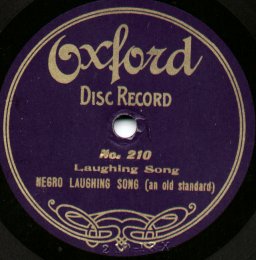
Oxford Records was a record label active in the United States of America from roughly 1906 until 1916. The label was produced for Sears by several labels, including Columbia and Albany Indestructible Cylinders for cylinders and Leeds & Catlin, Zon-O-Phone, and Columbia for discs. No recording activity was undertaken by Sears. All discs were single-sided.

Vim Records was a short-lived American record label that was active during the early 1900s. Vim discs include issues of ragtime banjo music recorded by Vess L. Ossman.
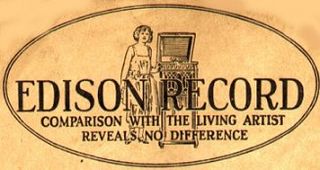
The Edison Diamond Disc Record is a type of phonograph record marketed by Thomas A. Edison, Inc. on their Edison Record label from 1912 to 1929. They were named Diamond Discs because the matching Edison Disc Phonograph was fitted with a permanent conical diamond stylus for playing them. Diamond Discs were incompatible with lateral-groove disc record players, e.g. the Victor Victrola, the disposable steel needles of which would damage them while extracting hardly any sound. Uniquely, they are just under 1⁄4 in thick.

Byron George Harlan was an American singer from Kansas, a comic minstrel singer and balladeer who often recorded with Arthur Collins. The two together were often billed as "Collins & Harlan".

Sound recording and reproduction is the electrical, mechanical, electronic, or digital inscription and re-creation of sound waves, such as spoken voice, singing, instrumental music, or sound effects. The two main classes of sound recording technology are analog recording and digital recording.
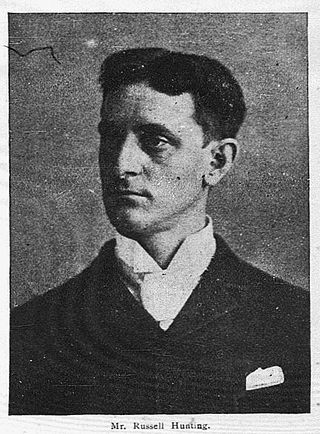
Russell Dinsmore Hunting was an American comic entertainer, pioneer sound recordist, and an influential figure in the early years of the recorded music industry. He was described as "the most popular pre-1900 recording artist".

Aretino was a United States record label, in business from about 1907 to 1914.

John W. Myers, who was usually credited as J. W. Myers, was a Welsh-born baritone singer, who recorded widely in the United States between the early 1890s and early 1917. His recordings, including "Two Little Girls in Blue" (1893), "The Sidewalks of New York" (1895), "Just Tell Them That You Saw Me" (1895), "When You Were Sweet Sixteen" (1901), "On a Sunday Afternoon" (1902), "Way Down In Old Indiana" (1902), and "In the Good Old Summer Time" (1902), were among the most popular of the period.

The United States Phonograph Company was a manufacturer of cylinder phonograph records and supplies in the 1890s. It was formed in the Spring of 1893 by Victor Emerson, manager of the New Jersey Phonograph Company. Simon S. Ott and George E. Tewkesbury, heads of the Kansas Phonograph Company and inventors of an automatic phonograph joined later. It was based in Newark, New Jersey. After the collapse of the North American Phonograph Company in August 1894, the United States Phonograph Company became one of the industry's largest suppliers of records, competing mostly with the Columbia Phonograph Company who had joined with the American Graphophone Company to manufacture graphophones, blank wax cylinders, and original and duplicate records. The USPC manufactured duplicates as well, which allowed their recording program to reach the scale of competing with Columbia's. Their central location and proximity to New York allowed them to record the most popular artists of the 1890s, including George J. Gaskin, Dan W. Quinn, Len Spencer, Russell Hunting and Issler's Orchestra. Emerson left the company to lead Columbia's recording department around the summer of 1896. In 1897 the USPC worked with Edison's National Phonograph Company to retrofit phonographs with spring motors invented by Frank Capps. The convenience and cost savings of spring-motor phonographs like these helped shift the phonograph from a public entertainment to a consumer good. In October 1899 the company was prohibited by court order from manufacturing duplicate records, and they began supplying original records for the National Phonograph Company[7][6][6][5][5]. The later U.S. Phonograph Company of Cleveland Ohio is unrelated.

Walcutt and Leeds was a manufacturer and dealer of cylinder records and supplies in the 1890s. It was formed in February 1896 by Cleveland Walcutt and Edward F. Leeds at 53 E. 11th St. in New York City. Walcutt and Leeds had previously been partners in the firm Walcutt, Miller & Co., which had purchased the record manufacturing plant of the North American Phonograph Company at 120 E. 14th St. in New York City, including a large stock of records, blanks, and recording phonographs.

Frank P. Banta was an American pianist and recording artist active in the 1890s and 1900s.
The Discography of American Historical Recordings (DAHR) is a database catalog of master recordings made by American record companies during the 78rpm era. The DAHR provides some of these original recordings, free of charge, via audio streaming, along with access to the production catalogs of those same companies. DAHR is part of the American Discography Project (ADP), and is funded and operated in partnership by the University of California, Santa Barbara, the National Endowment for the Humanities, and the Packard Humanities Institute.



















